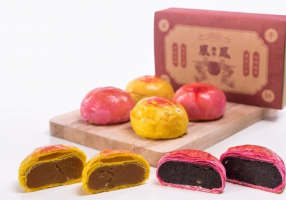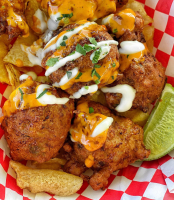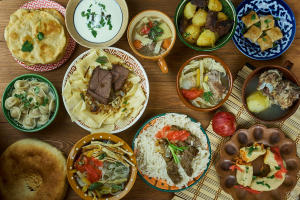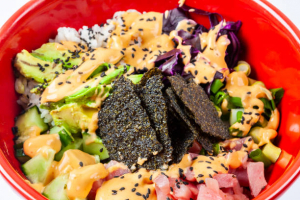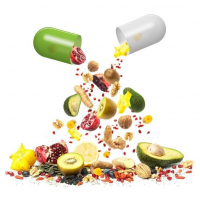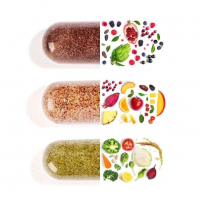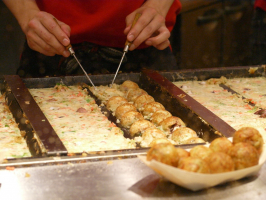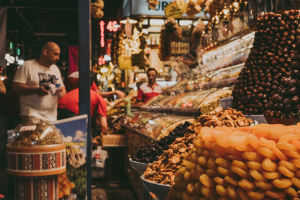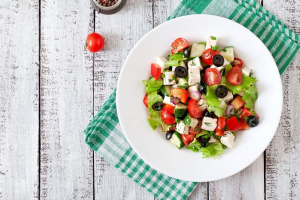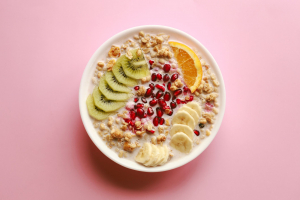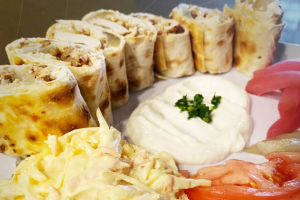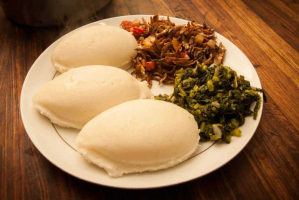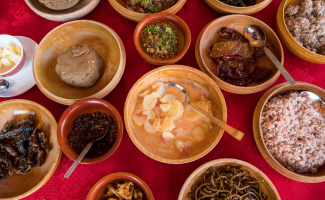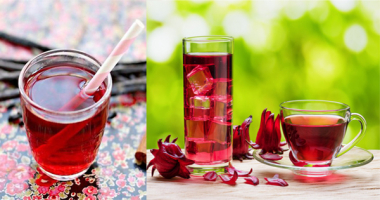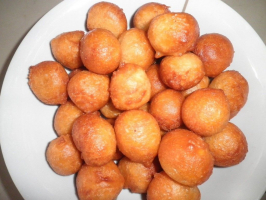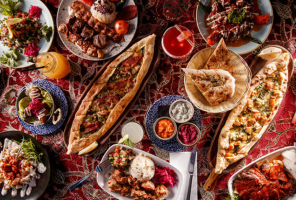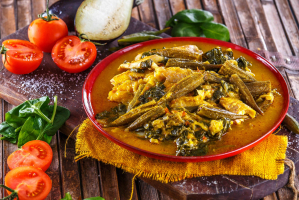Top 15 Best Malaysian Foods
If you like Singaporean and Indonesian cuisine, you'll like Malaysian cuisine as well. Because of their shared histories, closeness, and ethnic makeup, these ... read more...three cuisines share numerous similarities. If you're planning a trip to Malaysia and want to get a taste of the local cuisine, Toplist hopes the list of the Top 15 greatest Malaysian cuisines will point you in the right direction.
-
Roti canai is a flatbread dish popular throughout Southeast Asia, especially Malaysia, where it is considered a national dish. It is originally an Indian dish and is one of the most well-known instances of Malaysian-Indian cuisine. To produce layers, the dough is continuously kneaded, flattened, oiled, and folded before serving. It's then flattened and tossed till paper thin before being folded into a bundle and griddle-cooked.
Roti canai is a popular breakfast or snack that is normally served plain with a curry dip - commonly dal (lentil), but it can also be filled with savory and sweet items such as egg, onion, cheese, sliced bananas, or kaya spread. It's something always ordered as an appetizer in Malaysian restaurants. Some restaurants wrap its roti in an egg and fried chicken. The dough is stretched thin enough to keep its crispiness even after cooking.
Roti canai is also popular in Singapore, where it is called roti prata. It's known as roti cane, roti konde, or roti maryam in Indonesia.
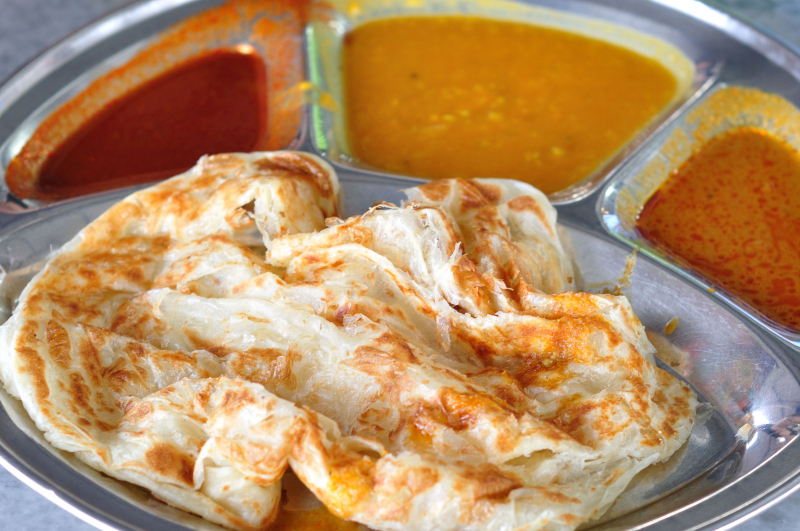
Chudu24.com 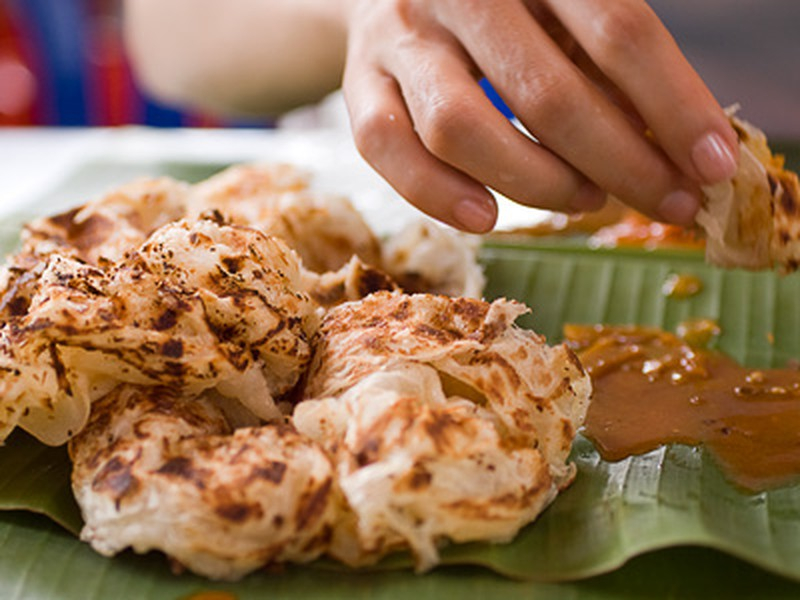
kienthuc.net.vn -
Lor bak (also known as ngo hiang or heh gerng) is a Hokkien and Teochew cuisine popular in Eastern China and a few Southeast Asian nations such as Malaysia, Indonesia, and Singapore.
Lor bak is cooked with various varieties of meat, fish, tofu, or vegetables that have been seasoned with five-spice powder and wrapped in a thin beancurd skin. After that, they're deep-fried and served with chili sauce and loh, a sweet sauce sweetened with corn starch and beaten eggs. Lorbak's main seasoning is Chinese five-spice powder, which is made up of star anise, cloves, cinnamon, sichuan peppercorn, and fennel seeds. As a result, it is known as ngo hiang in Indonesia and Singapore, and quekiam in the Philippines, both of which imply "five spices."
It's one of those foods that Malaysian usually eat outside because it takes so much time to prepare if they make it themselves. The components are actually pretty basic, but it takes a lot of time to prepare them, especially when peeling the water chestnuts.
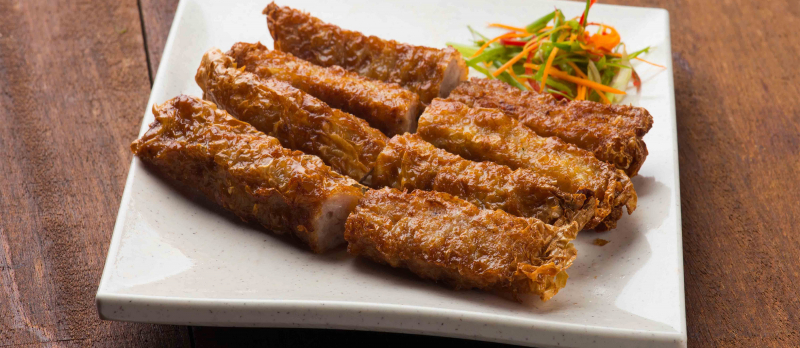
TasteAtlas.com https://www.bakewithpaws.com -
If you're a fan of Singaporean cuisine, you might know Char Koay Kak. It's simply the Malaysian version of chai tow kueh, or "fried carrot cake," and was originally a Teochew cuisine. A dish made with radish cake (steamed rice flour, water, and shredded white daikon) stir-fried with eggs, preserved radish, bean sprouts, and seasonings is known as char koay kak. It's a popular comfort meal in Malaysia, from small hawker booths to more upscale Chinese restaurants.
Rice cake cooked with black soy sauce, chopped chai poh, and bean sprouts is the most basic type of Char Koay Kak. Many individuals choose the "extra" with egg. If you want it spicy, you can also ask the vendor to add some chili paste. Others will opt for the "deluxe" version, which includes shrimp. Some merchants will also add kuchai (Chinese chives) for color.
Contrary to its English name, this dessert is not made with carrots and bears no connection to western carrot cake. In Singapore, it became known as "carrot cake" since the Hokkien term for radish - chai tow – can refer to either a carrot or a radish.
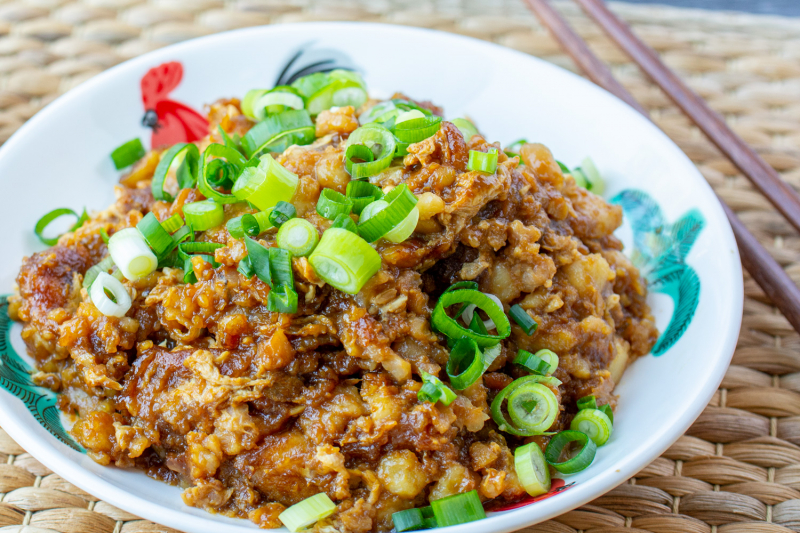
https://asianinspirations.com.au 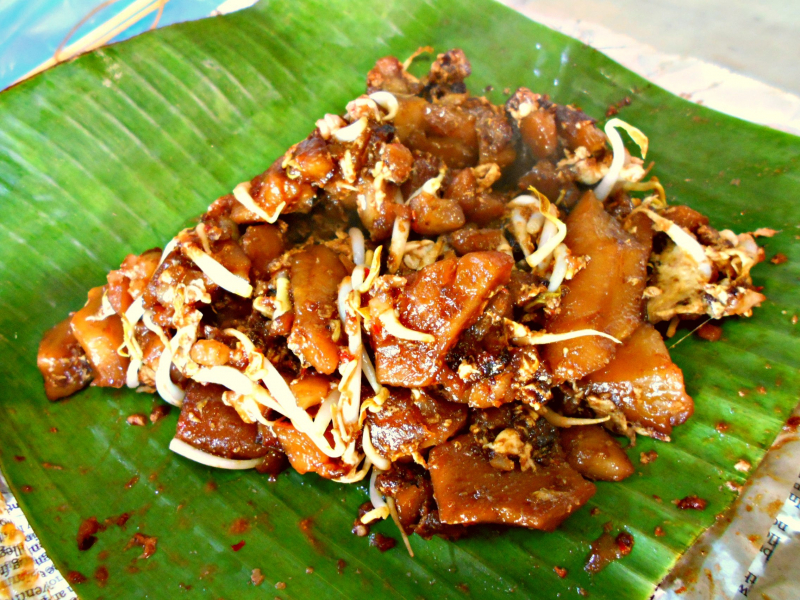
https://www.hungryonion.org -
The Ramly Burger is a Malaysian street food staple. In fact, some travelers told that the Ramly Burger was the one Malaysian food they missed the most from Kuala Lumpur.
In Malaysia, the term "Ramly Burger" refers to any form of burger offered as street food. Ramly Burgers are made with beef or chicken patties produced by the Ramly Food Processing Company. Preparations vary from vendor to vendor, but at their core, Ramly Burgers are made with beef or chicken patties produced by the Ramly Food Processing Company. Ramly Mokni devised the burger in 1979, and it quickly became a classic.
A lot of travelers were intrigued by the Ramly Burger after hearing about it from the tour guide, so they decided to try it in Malaysia. A Ramly Burger can only be a Ramly Burger if the patty contains Maggi seasoning and a black pepper sauce made with milk, butter, oyster sauce, sweet soy sauce, and cornstarch.
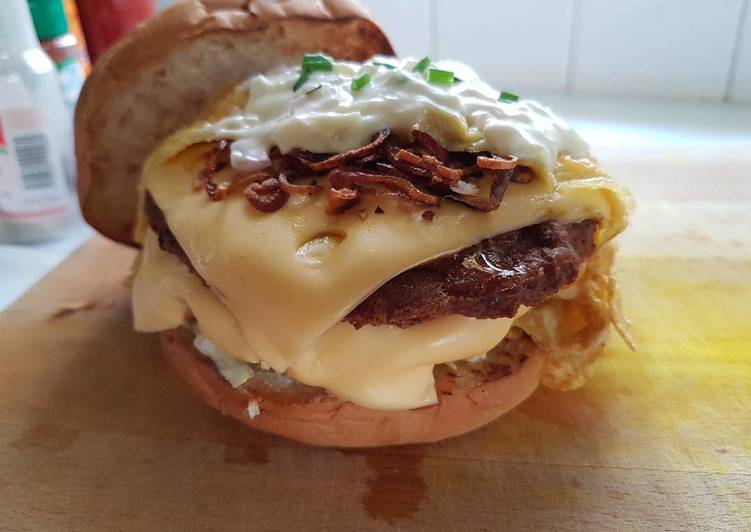
https://www.bestrecipes.com.au 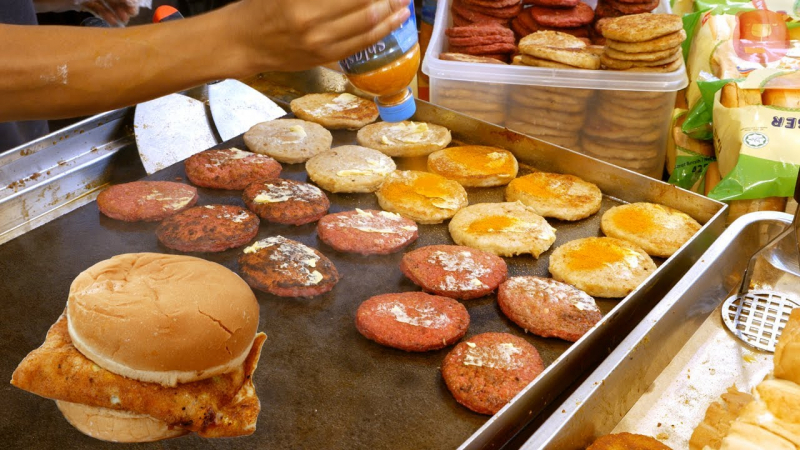
Photo: chompbear's Youtube Channel -
Sate, often known as satay, is an Indonesian cuisine that has gained popularity in Malaysia and other Southeast Asian countries. In fact, it has grown so ingrained in Malaysian cuisine that it is now acknowledged as one of the country's four national dishes. Other dishes include nasi lemak, laksa, and roti canai.
Sate is a skewered and cooked over charcoal family of seasoned meats. It's commonly cooked with various sorts of meat such as chicken, beef, pork, goat, and mutton, but it can also be made with seafood, fish balls, vegetables, and tofu. It's typically accompanied by a sate sauce composed of roasted peanuts, palm sugar, tamarind, and chili.
Sate is widespread in Malaysia, and it is equally popular at street food booths as it is at formal sit-down restaurants. In Penang, you can taste a form of sate known as lok-lok, which is essentially a mix of Chinese hot pot and sate.
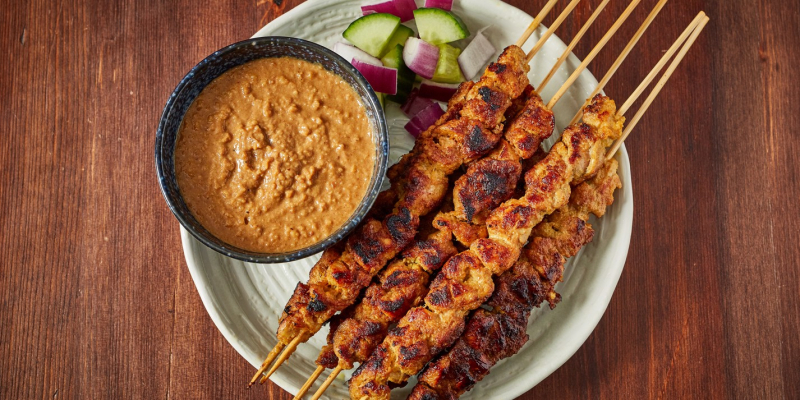
greatbritishchefs.com 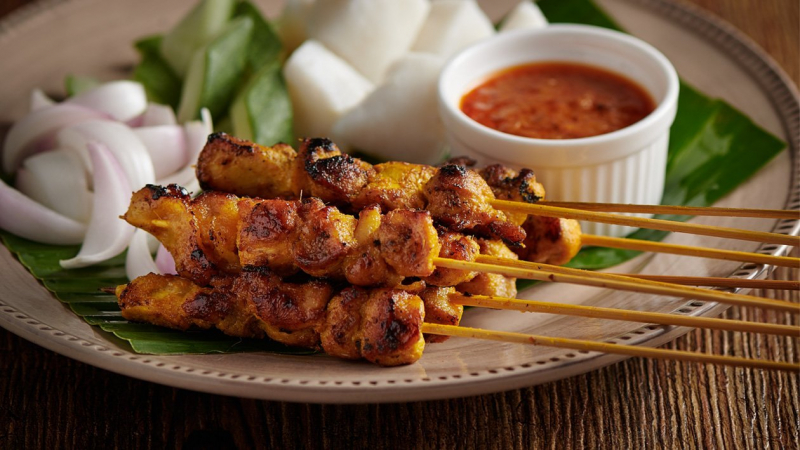
edulinks.vn -
Lok-lok is a sort of sate that is popular in Penang. It's a sate/hot pot hybrid in which various sorts of skewered meats, seafood, and vegetables are cooked in a communal pot of boiling water.
Raw meat, tofu, dumplings, fish cake, offal, and century eggs are all impaled on bamboo poles and arranged around a center pot, as seen below. The price of the sticks is indicated by color, and diners are free to choose whatever they like and cook it inside the pot. When the sate is done, it is served with sate sauce and sambal.
Lok-lok is a popular sort of meal in Penang, and it is available at restaurants, hawker centers, and even street food carts. It's fascinating to observe people gathering around a mobile cart dipping sate sticks into a hot pot of water. When you come to Malaysia, you must try this very popular and famous meal.
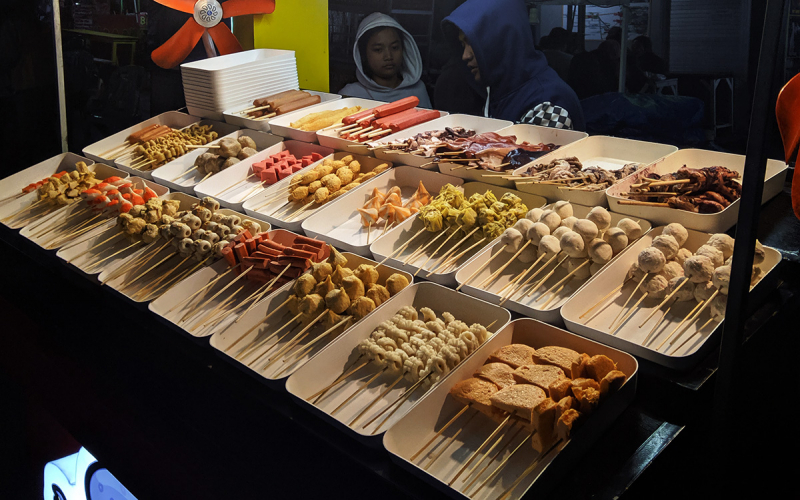
bjn.wikipedia.org 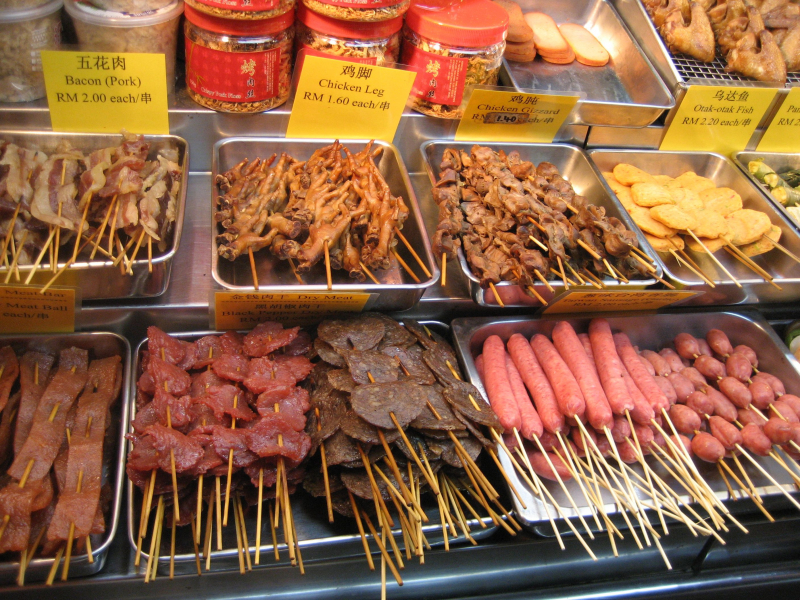
pinterest.com -
Bak kut teh is a famous Hokkien and Teochew pork rib dish in Malaysia and Singapore. It's cooked with succulent pig ribs that have been stewed for hours in a rich broth with herbs and spices like star anise, cinnamon, cloves, and fennel seeds.
Interestingly, the name bak kut teh translates to "meat bone tea," despite the fact that no tea is used to produce the dish. The "tea" alludes to the strong oolong Chinese tea that is typically served alongside the dish. It's used to dilute the significant amount of pork fat included in bak kut teh.
In Malaysia, bak kut teh is frequently served with char kway (fried dough) with a soy sauce, chili, and garlic dip. There is also a dry form of bak kut teh available, as well as a less fatty version prepared with chicken called chik kut teh. Bak kut teh is one of must-try dishes in Malaysia.
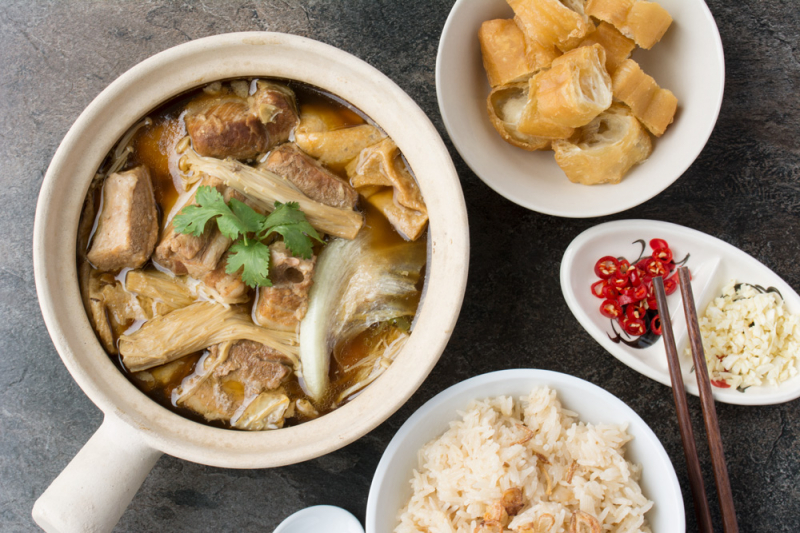
asianinspirations.com.au 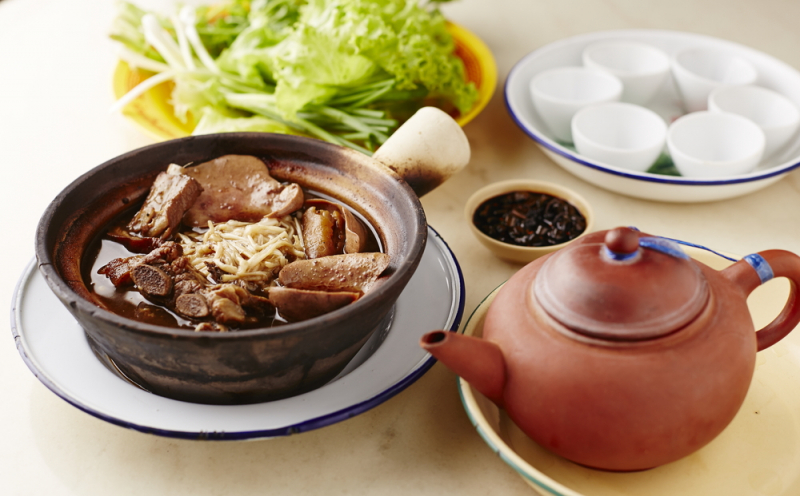
theculturetrip.com -
Curry laksa (or just laksa) is a popular Peranakan noodle soup in Malaysia, Singapore, and Indonesia. It's made with thick wheat noodles or rice vermicelli that's been cooked in a rich and spicy curry coconut milk broth.
Curry Laksa is a Malaysian curried noodle soup made with coconut milk and topped with shredded chicken, prawns, fried tofu, and bean sprouts. This is a must-try! Curry Laksa is a dish that combines Chinese noodles with Southeast Asian curries. Many people feel that this mixture is a "match made in heaven." Curry laksa is created using a spice paste that includes ingredients such as garlic, shallots, lemongrass, and belacan. Deep-fried tofu, a hard-boiled egg, bean sprouts, cockles, shrimp, and cuttlefish are common toppings. It's then topped with coriander and served with a serving of sambal.
Curiously, the Penang version of curry laksa is known as curry mee. Curry laksa and curry mee are the same dish, although in Penang, the word "curry mee" is used to distinguish it from asam laksa. Penang curry mee is commonly served with cubes of congealed pork blood.
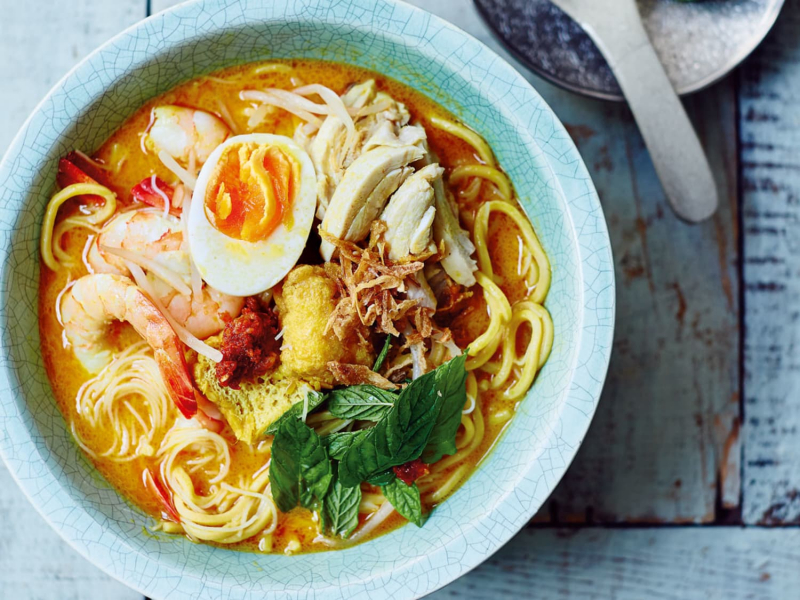
thekitchn.com 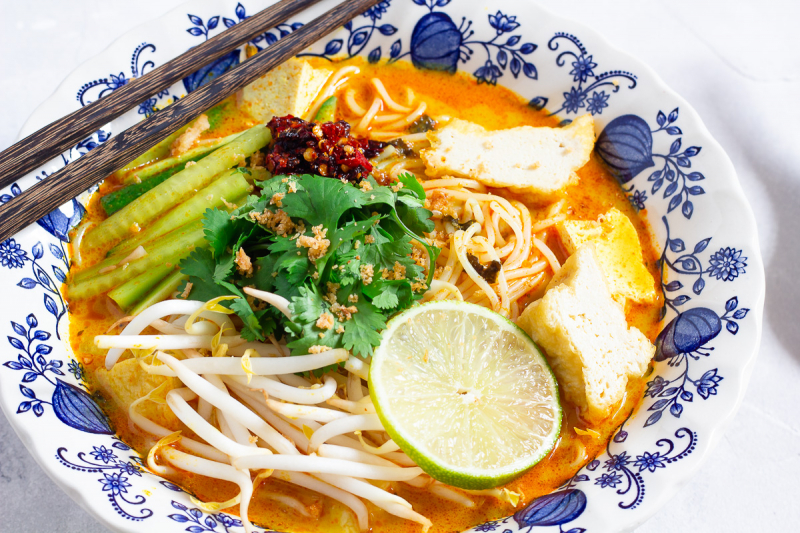
cheapandcheerfulcooking.com -
Curry laksa is also known as curry mee in Penang due to the presence of asam laksa. It refers to a form of laksa that uses tamarind or gelugur as a souring agent (asam) instead of coconut milk.
As opposed to curry laksa, which is rich and creamy, asam laksa is sour, sharp, and spicy. Apart from the souring agent, asam laksa is typically made with shredded mackerel and finely sliced vegetables such as cucumber, onions, red chili, pineapple, mint leaves, laksa leaves, and torch ginger. It's typically served with thick or thin rice noodles and topped with otak udang, a sweet shrimp paste.
Asam laksa has a few regional varieties, with the Penang version being one of the most well-known. It is, in fact, the only Malaysian dish to make CNN Travel's list of the World's 50 Best Foods. When visiting Penang, you should absolutely try the asam laksa. Check out Penang food guide to find out where you can try it.
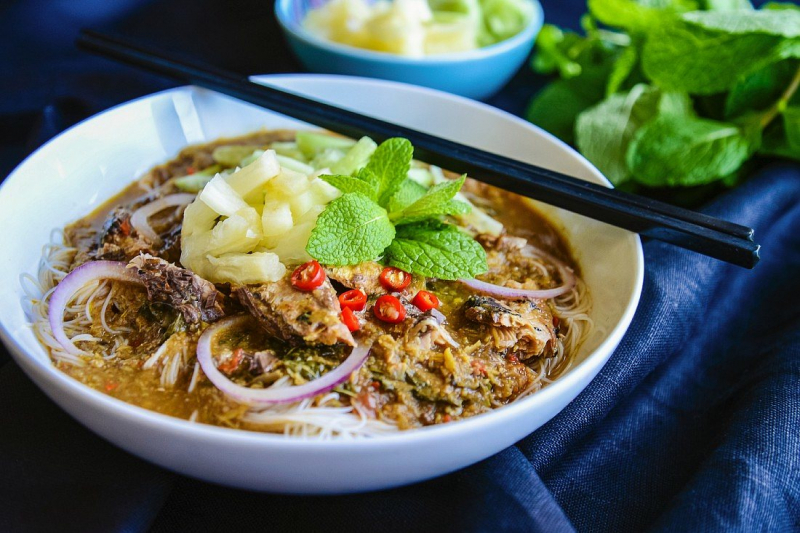
imageprofessionals.com 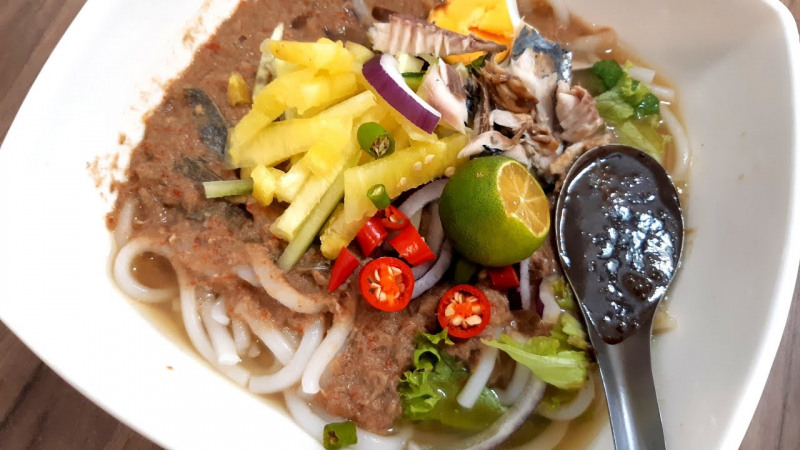
Photo: Bếp Nhà Dieu Nguyen's Youtube Channel -
Char kway teow is a stir-fried Chinese noodle dish popular in Malaysia, Singapore, Indonesia, and Brunei. Char means "stir-fried," while kway teow alludes to the dish's flat rice noodles. Kway teow noodles are stir-fried in hog fat at high heat with a variety of ingredients such as light and dark soy sauce, chili, belacan, prawns, blood cockles, Chinese chives, fishcake, and bean sprouts. To enhance the aroma of the noodles, it is frequently served on a dish lined with banana leaf.
In Malaysia, char kway teow is a popular dish that is frequently the topic of heated dispute. Everyone has an opinion on who makes the best ice cream, and no one is ever wrong.
You enjoyed this excellent char kway teow in Penang that was made even more luxurious with duck eggs. It was rich and excellent, with that unmistakable wok hei flavor. Char Kway Teow is one of must-try dishes in Malaysia.
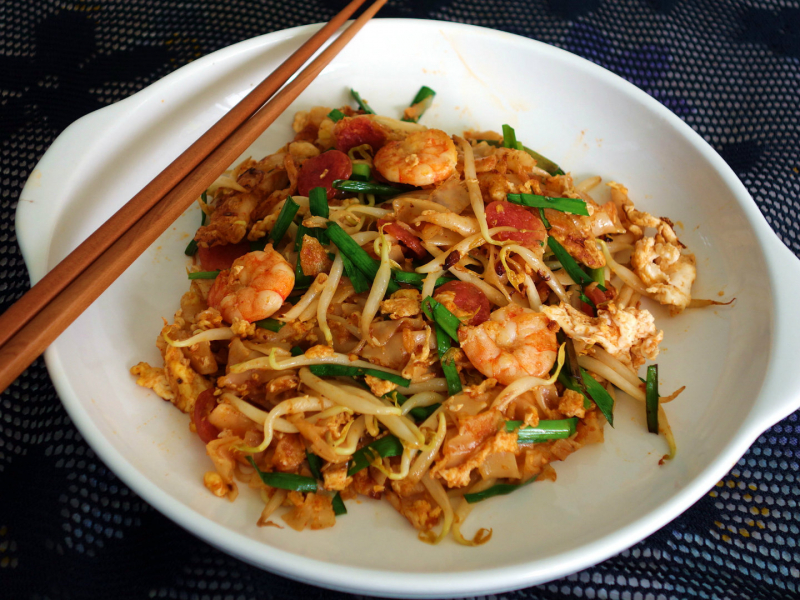
chudu24.com 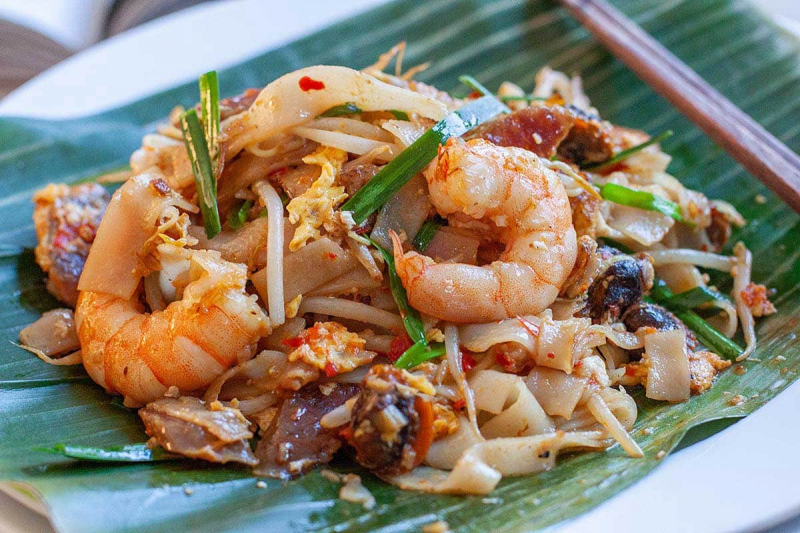
rasamalaysia.com -
Hokkien mee, as the name implies, is a Hokkien cuisine popular in Southeast Asian nations such as Malaysia, Singapore, and Indonesia. The term might be perplexing because it refers to three separate variants of the dish.
Hokkien mee, also known as hae mee in Singapore, is a stir-fried meal prepared with egg noodles and rice noodles and topped with prawns, fish cake, pig ribs, squid, spring onions, and fried pork or chicken fat. The Kuala Lumpur version of hokkien mee (also known as hokkien char mee) is identical to the Singaporean form, but it is cooked with a thick black soy sauce.
Penang has the third and last version of hokkien mee. It is also known as hae mee, similar to Singaporean hokkien mee. Penang hokkien mee, on the other hand, refers to a noodle soup meal cooked with egg noodles and rice vermicelli in a thick broth seasoned with prawn heads and shells and pork ribs, as opposed to the Singaporean version.
As if that weren't confusing enough, prawn mee, a Singaporean noodle soup delicacy, is extremely similar to Penang hokkien mee.
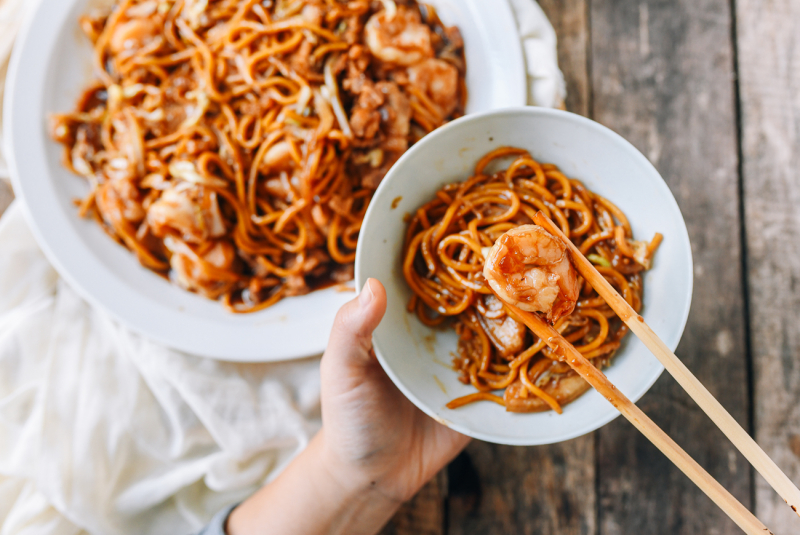
thewoksoflife.com 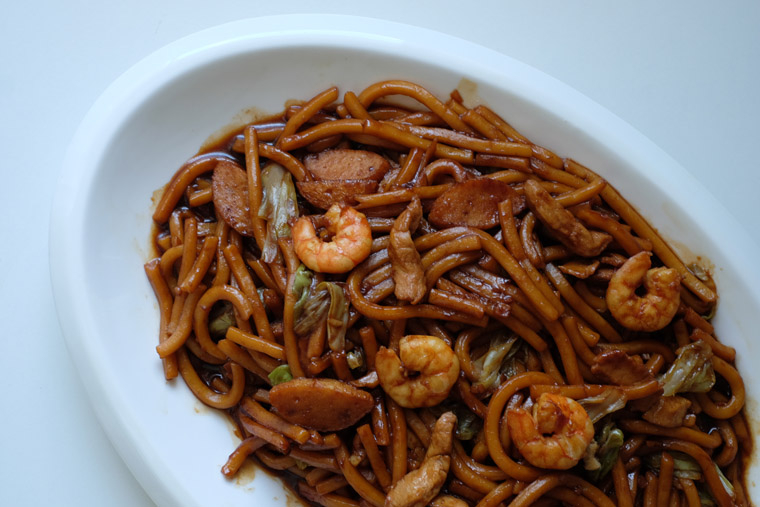
newmalaysiankitchen.com -
The first thing that many people think of when they think of Malaysian food is nasi lemak. It's a Malaysian national dish, and it's possible that it's the meal that best represents Malaysian cuisine. Nasi lemak is a Malaysian Malay cuisine meal that comprises aromatic rice cooked in coconut milk and pandan leaves. It's popular in Malaysia, where it's considered the national dish. [9] It is also a traditional dish in neighboring countries with large Malay populations, such as Singapore, Brunei, and Southern Thailand.
Nasi lemak, which translates as "oily or fatty rice," is a rice dish made with fragrant rice cooked in coconut milk and pandan leaf. It comes with sambal on the side and toppings like cucumber slices, ikan bilis (little fried anchovies), roasted peanuts, and a hard-boiled or fried egg. When served as a more substantial dinner, it is often accompanied by fried chicken, sambal sotong, rendang, or fried fish.
Nasi lemak is commonly eaten for breakfast, although it is also relished throughout the day. It is widely available at hawker centers and roadside stalls in both Singapore and Malaysia.
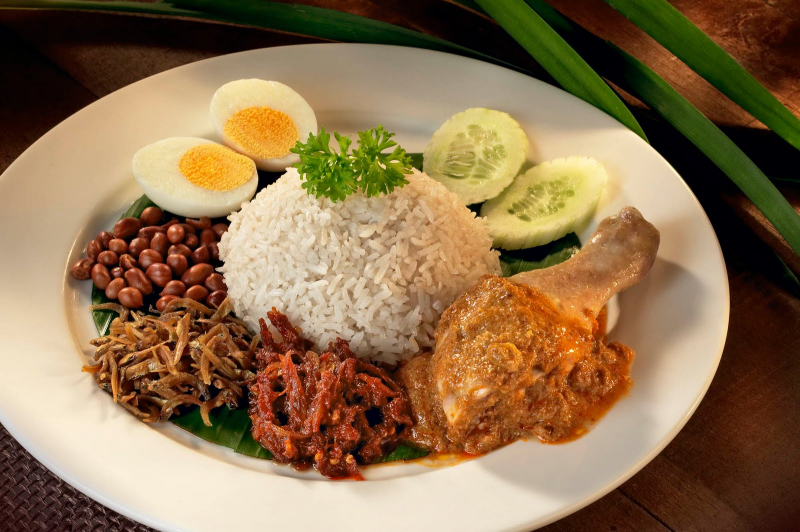
livinglocal.triip.me 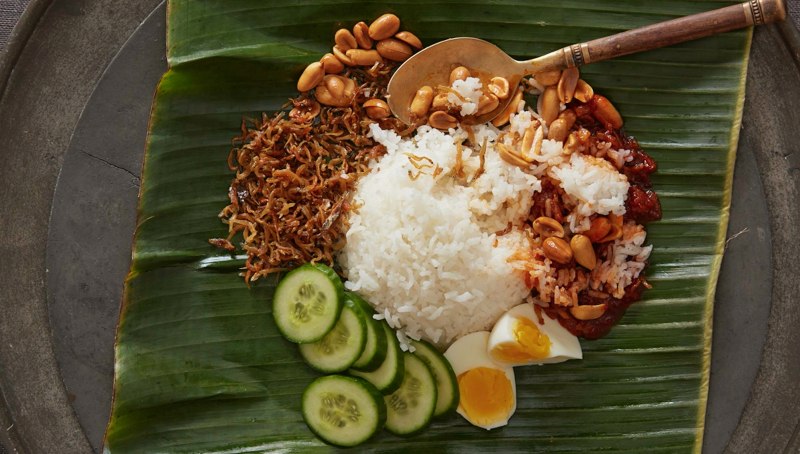
foodrepublic.com -
Kuih is a catch-all term for a vast family of bite-sized snacks or dessert meals popular in Malaysia and other Southeast Asian countries such as Singapore, Brunei, and Indonesia. Kuih is a generic name for a variety of Malaysian food products such as cakes, cookies, biscuits, dumplings, pudding, and pastries, the majority of which are produced from rice or glutinous rice. Kuih is typically steamed and sweet, however savory varieties do occur.
Malaysian kuih recipes vary, but the most popular flavoring ingredients include grated coconut, coconut cream, pandan leaves, and gula melaka. Most have a soft yet firm texture due to a batter composed of starches like rice flour, glutinous rice flour, tapioca flour, and mung bean flour.
Kuih comes in dozens of different forms and hues. Many of them are brilliant and colorful, making them popular and great festival foods in Malaysia. When you come to Malaysia, you must try this meal.
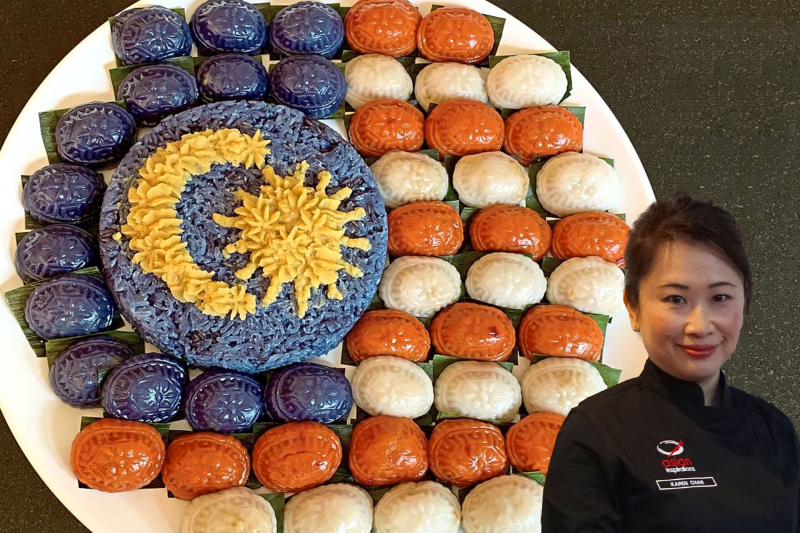
asianinspirations.com.au 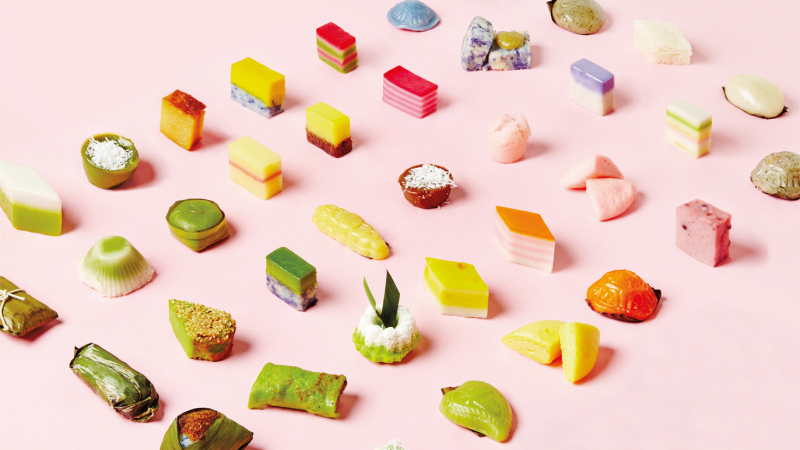
timeout.com -
Durian is one of Southeast Asia's most infamous fruits. It's infamous for having an exceedingly unpleasant odor that some compare to gym socks or raw sewage. Many people are put off by the smell, which is a shame because, in my opinion, durian is one of the most unusual and delicious fruits in the world.
Aside from its strong odor, durian is distinguished by its thick, prickly rind. It conceals a smooth and creamy flesh reminiscent of a delicious custard flavored with almonds. It's really delicious, something you wouldn't anticipate from such a pungent-smelling fruit.
Malaysia is the world's second largest durian grower, trailing only Thailand. It has approximately 130 varieties of the fruit, the most sought of which are Musang King, D24, and Red Prawn. If you visit Malaysia, you must try durian, and you can bring durian back to your relatives and friends as a Malaysian specialty.
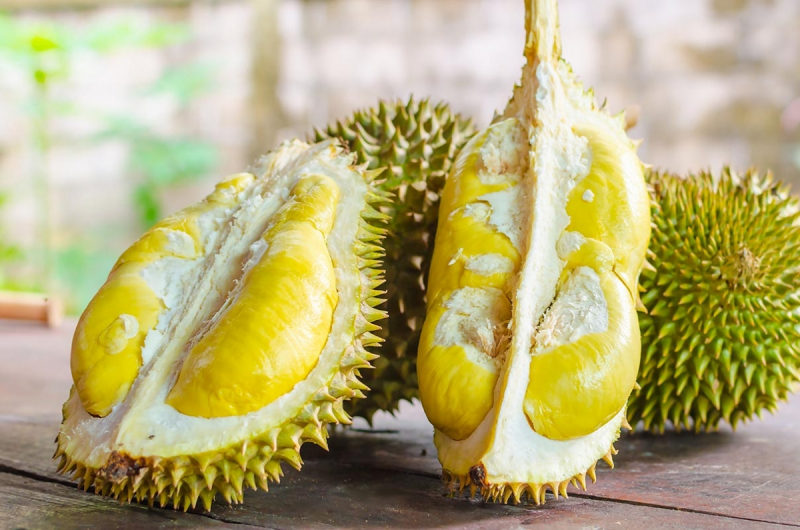
geographical.co.uk 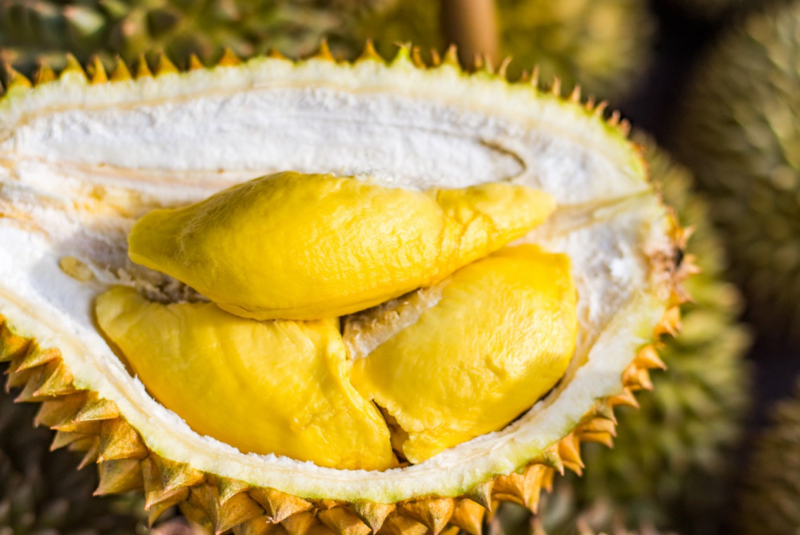
thejakartapost.com -
Teh tarik is a popular hot milk tea beverage that may be found in restaurants, outdoor stalls, mamaks, and kopitiams throughout Malaysia, Indonesia, Singapore, and Thailand. It gets its name from the pouring method of "pulling" the drink during preparation. It's created with a strong brew of black tea and condensed milk. It is Malaysia's national drink.
Teh tarik, which literally translates to "pulled tea," is a hot milk tea beverage popular in Malaysia, Singapore, and Indonesia. It takes its name from the manner in which it is poured or "drawn" from a distance during production.
Teh tarik is a strong black tea brew blended with condensed milk. To serve, sellers will flow the liquid back and forth from a distance to aerate and increase the flavor of the drink. Teh tarik merchants have gotten so proficient at it that they can pour the drink from a few feet away without dropping a drop, as shown below.
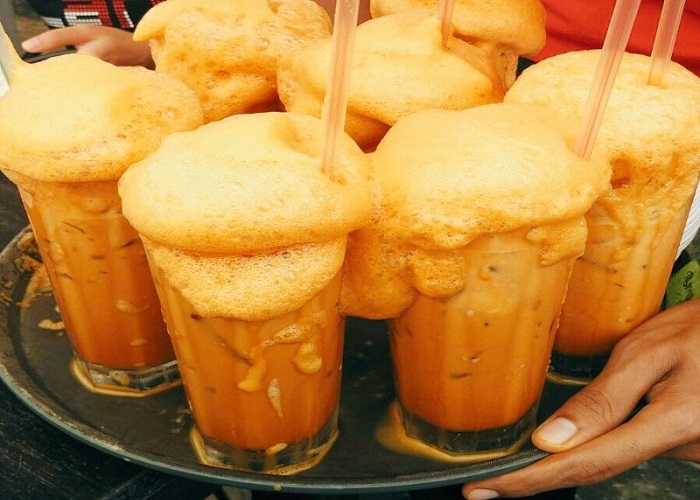
dulichvietnam.com.vn 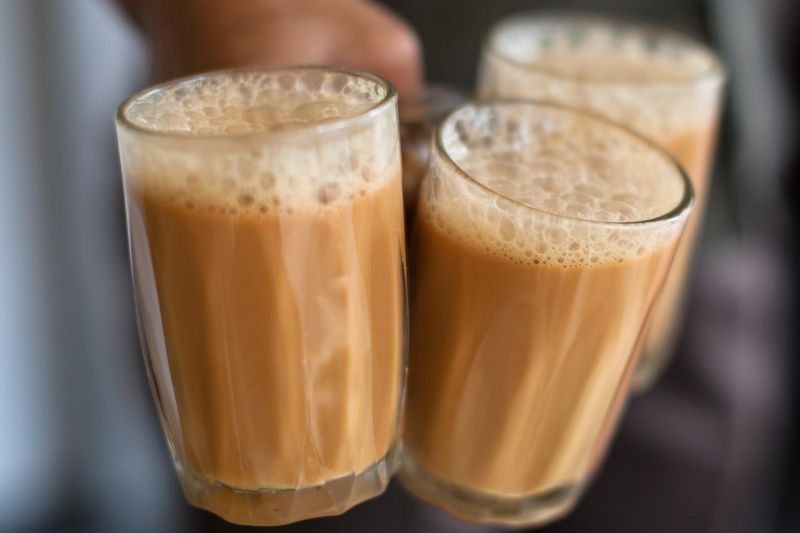
gumsurg.com

















